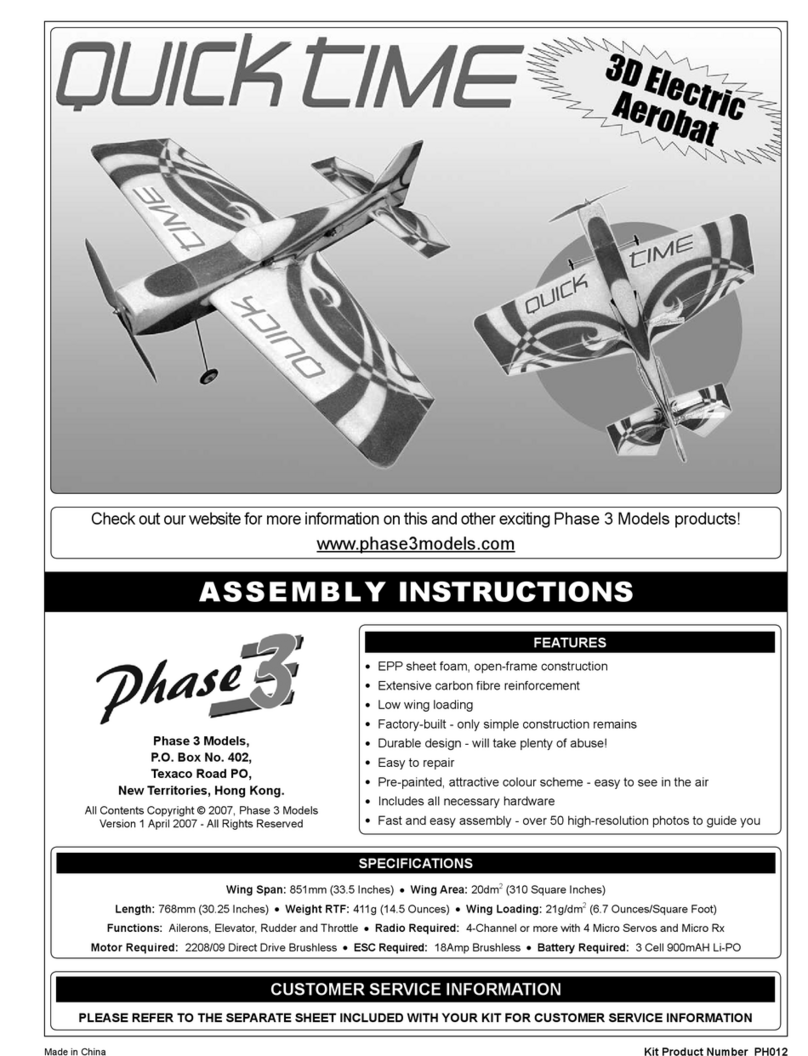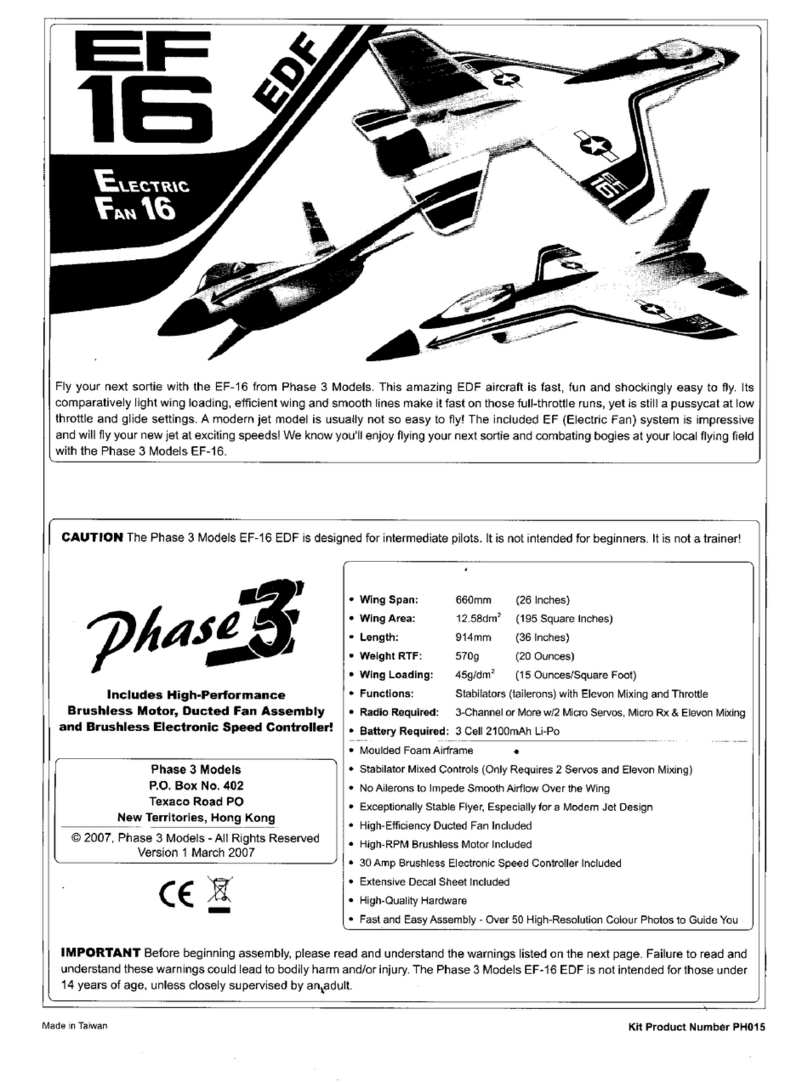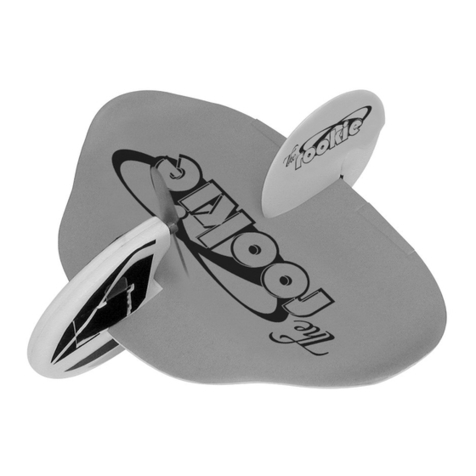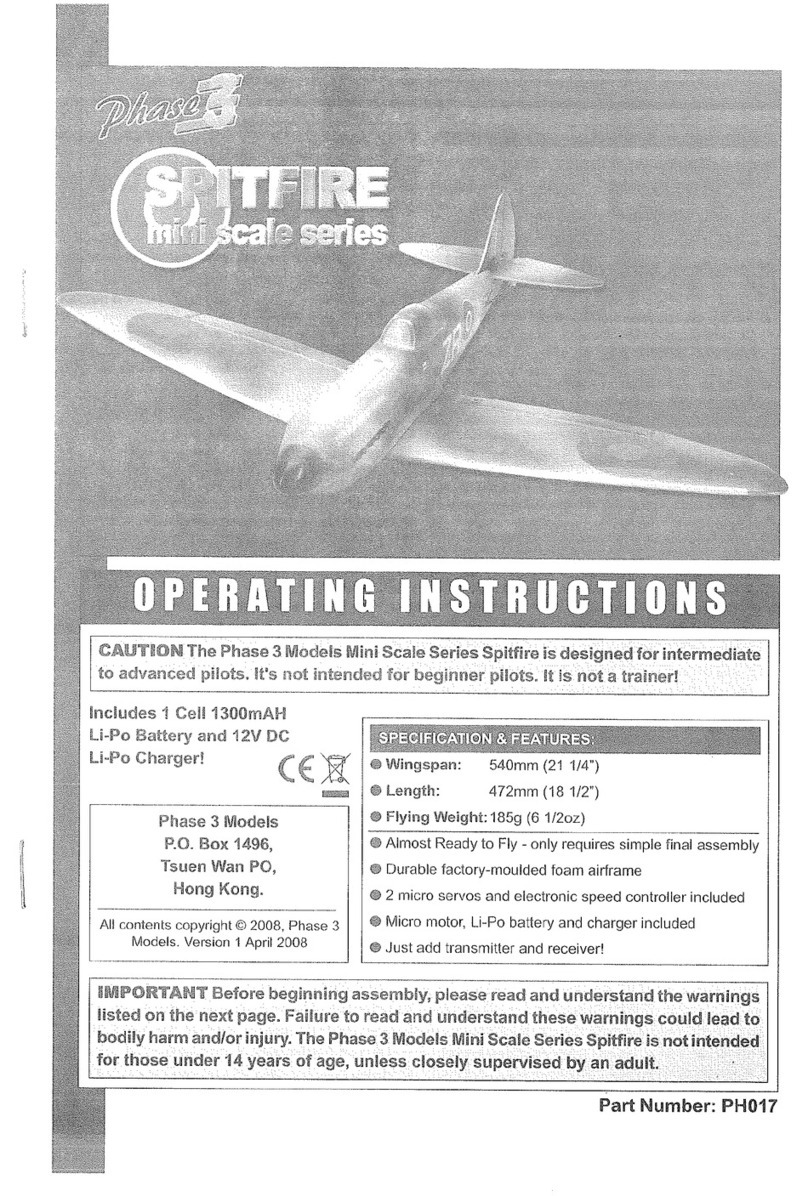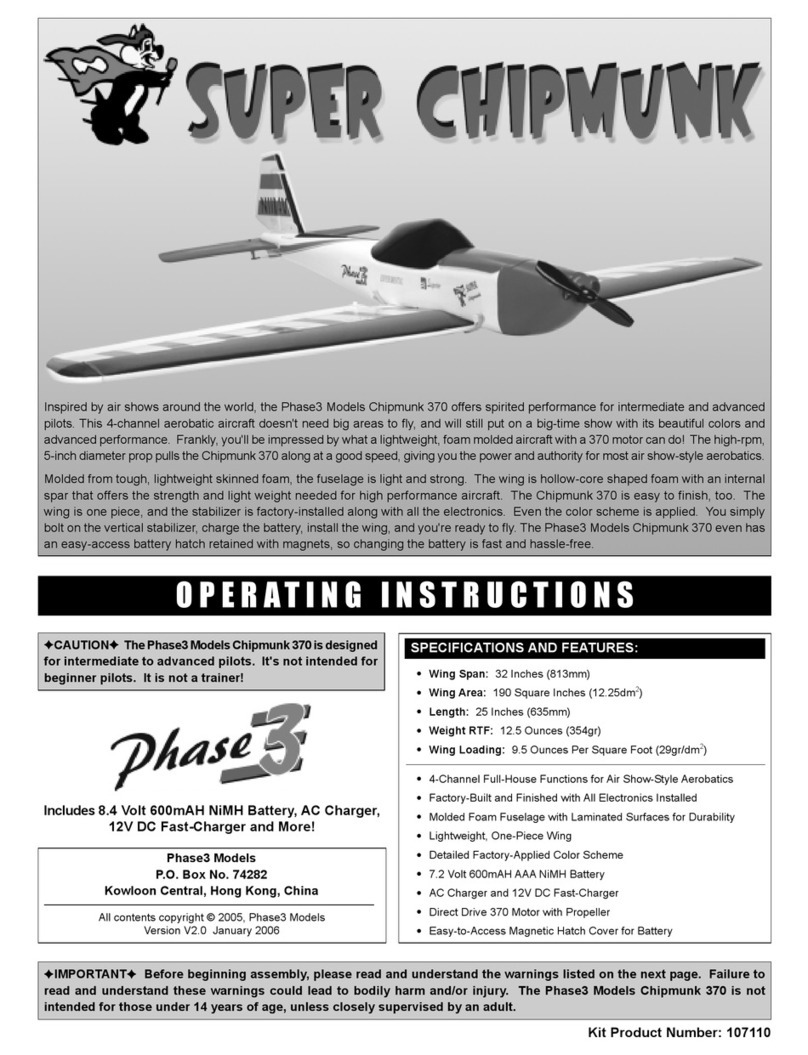
2
FOR YOUR SAFETY - PLEASE READ AND UNDERSTAND THESE WARNINGS!
● Do not y your airplane if another model is on the same
frequency as you. The frequency number is printed on the front
of the radio transmitter and on the receiver.
● Neveryyourairplanefromthestreetoratnight.Alwaysy
in an open area free of obstructions.
● Whenying,makesureanyspectatorsarebehindyou.
●Always be conscious of the spinning propeller. Be careful not
to allow loose clothing to be drawn into the propeller.
●Because your airplane is operated by radio control, it is
importanttomakesureyouarealwaysusingfreshand/orfully
charged batteries. Never allow the batteries to run low or you
could lose control of the airplane.
●Never attempt to disassemble any of the airplane's
components,especiallythetransmitterandightbattery.
●Do not allow any of the components to get wet or electrical
damage may occur.
●Youshouldcompleteasuccessfulrangecheckofyourradio
equipmentpriortoeachnewdayofying,orpriortotherst
ightofaneworrepairedairplane.
●If your airplane gets dirty, do not use any solvents to clean it.
Solvents will damage the foam and plastic. Use a dry cloth to
clean any dirt from the outside of the airplane.
GENERAL WARNINGS
● Neveroverchargetheightbatteryordamagetotheight
battery may occur.
● To prevent the ight battery from overheating during the
charging process, allow the ight battery to completely cool
before recharging it.
● Alwayscompletelydischargetheightbatterybyrunningthe
motoruntilitstopsbeforerechargingtheightbattery.
● Neverattempttodisassembletheightbatteryordisposeof
itinre.Theightbatteryshouldberecycledatanauthorized
recycling center.
●Always turn on the transmitter before turning on the airplane
and always turn off the airplane before turning off the transmitter.
●Always unplug the flight battery when not flying the
airplane.
●Never cut the receiver antenna shorter or you could lose
controloftheairplaneduringight.
● Whenyingtheairplane,makesurethetransmitterantenna
is completely extended.
●Never attempt to disassemble or modify any of the radio
FLIGHT BATTERY WARNINGS
RADIO SYSTEM WARNINGS
OUR GUARANTEE
Phase3guaranteesthiskittobefreefromdefectsinbothmaterialandworkmanshipatthedateofpurchase.Thisdoesnotcoveranycomponentpartsdamagedby
use,misuseormodication.In no case shall Phase 3's liability exceed the original cost of the purchased kit.
InthatPhase3hasnocontroloverthenalassemblyormaterialusedfornalassembly,noliabilityshallbeassumedforanydamageresultingfromtheusebythe
userofthenaluser-assembledproduct.Bytheactofusingthenaluser-assembledproduct,theuseracceptsallresultingliability.






